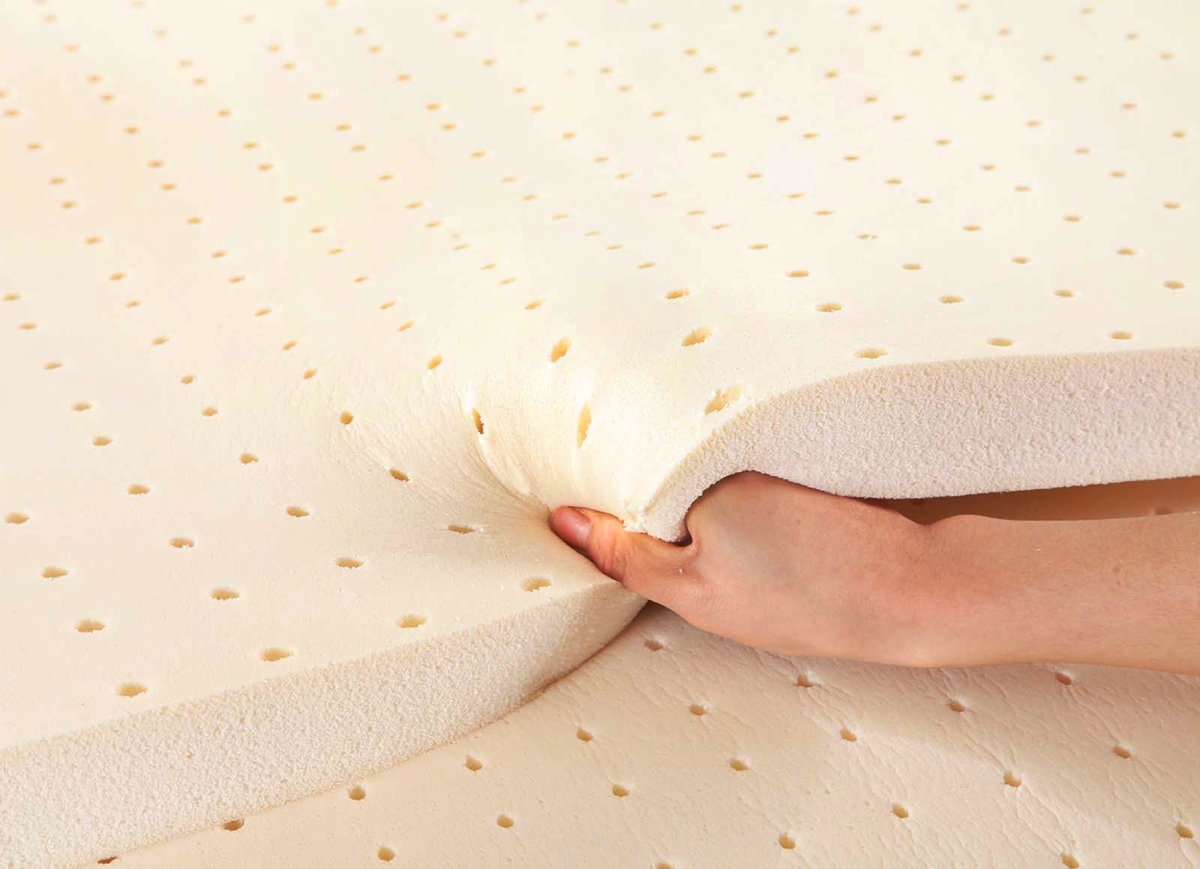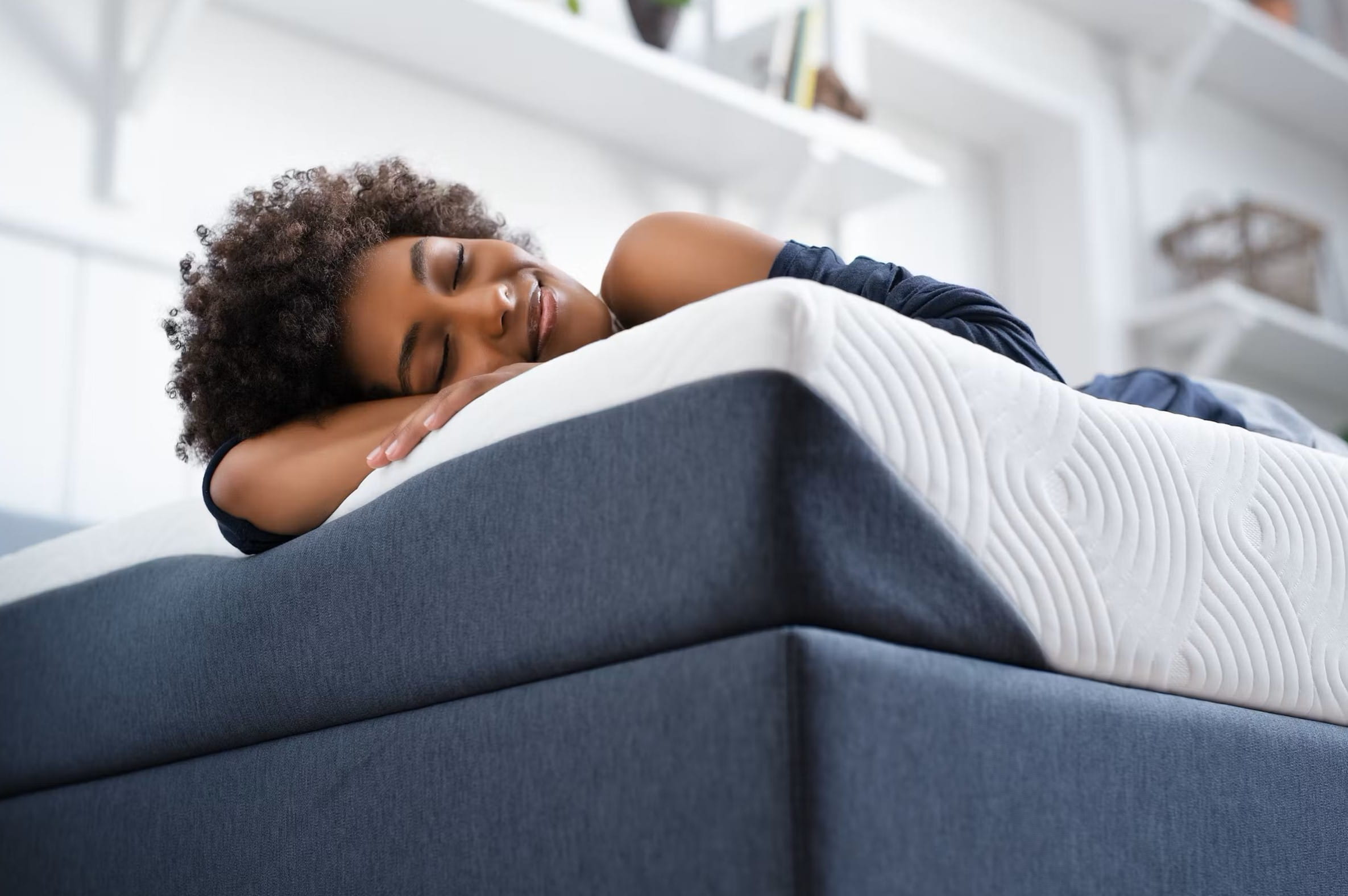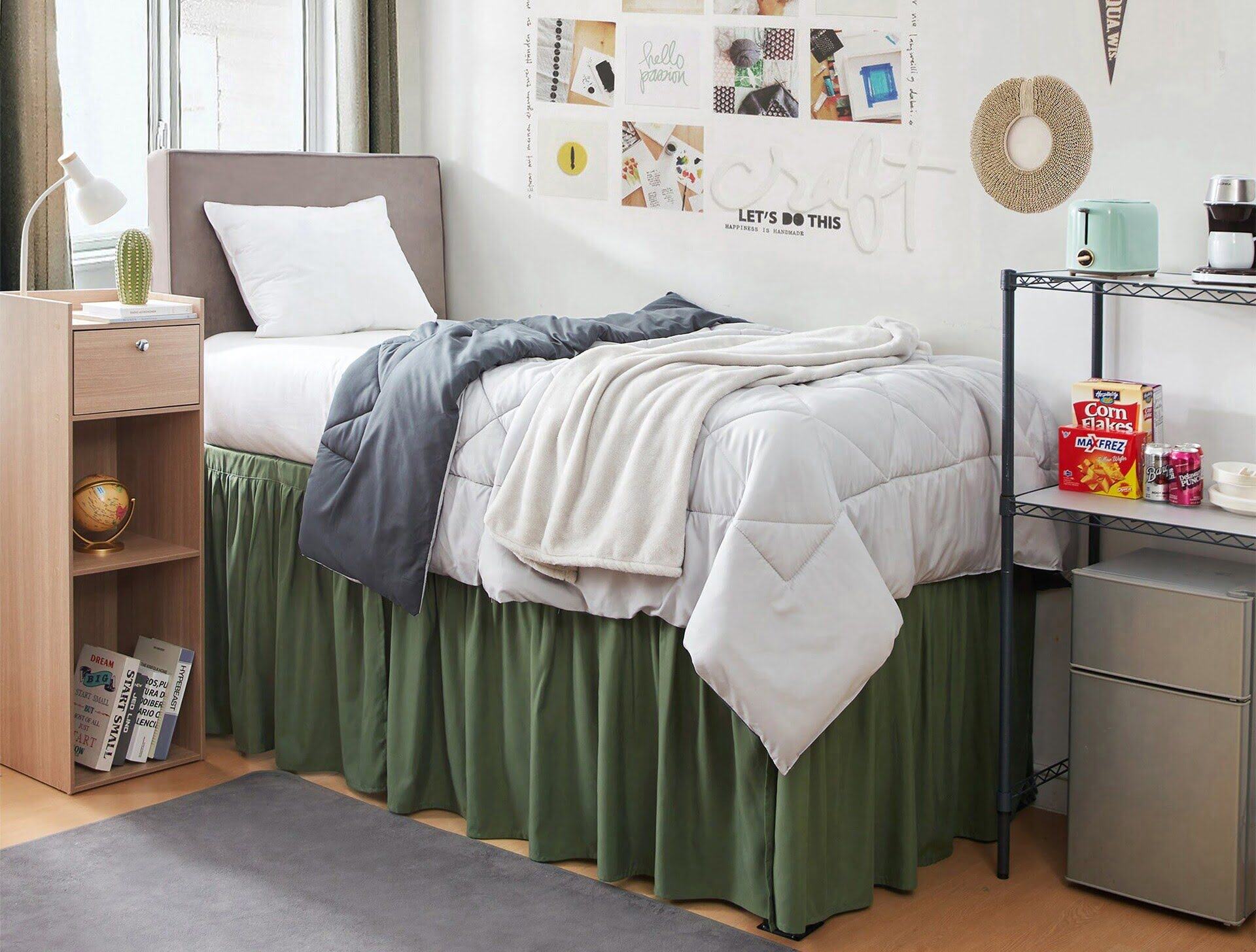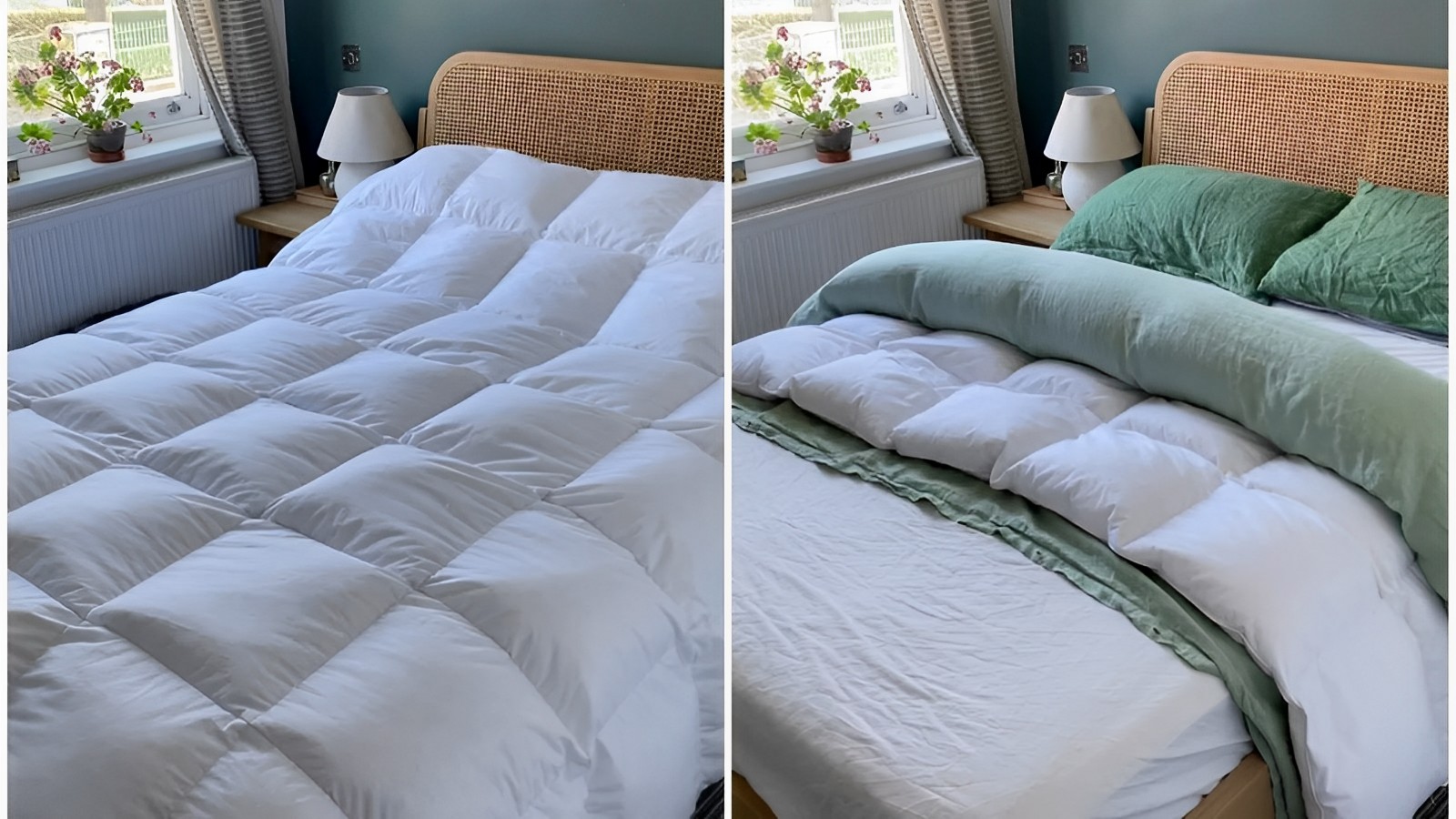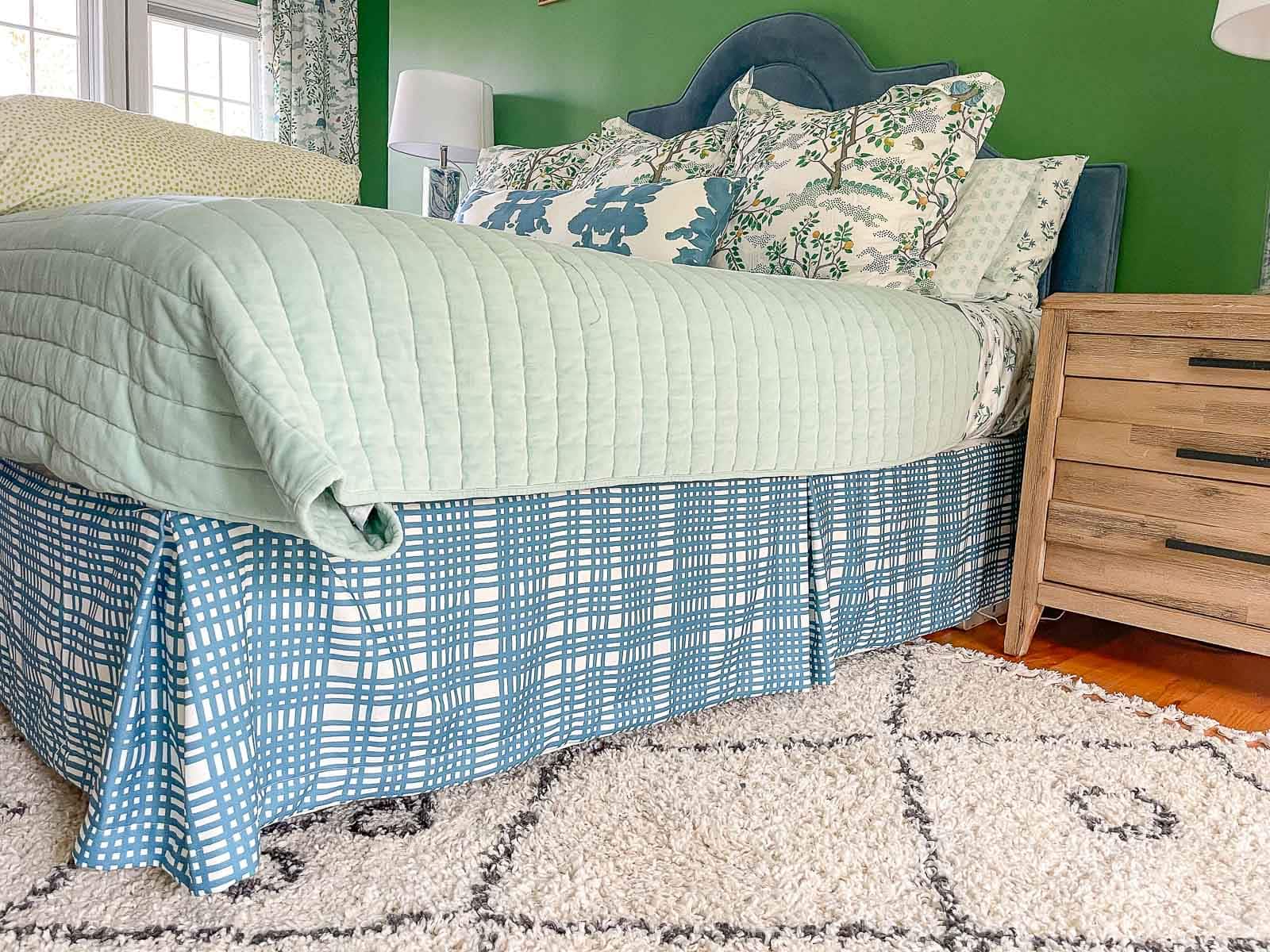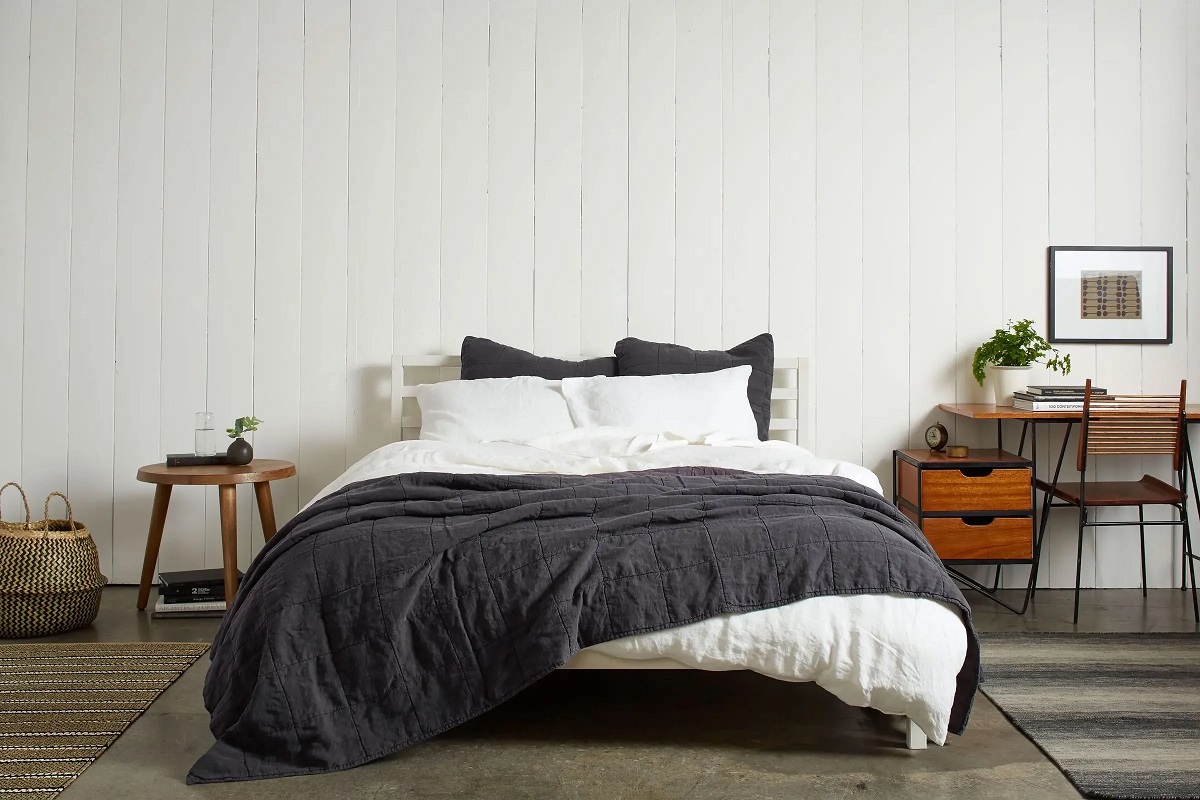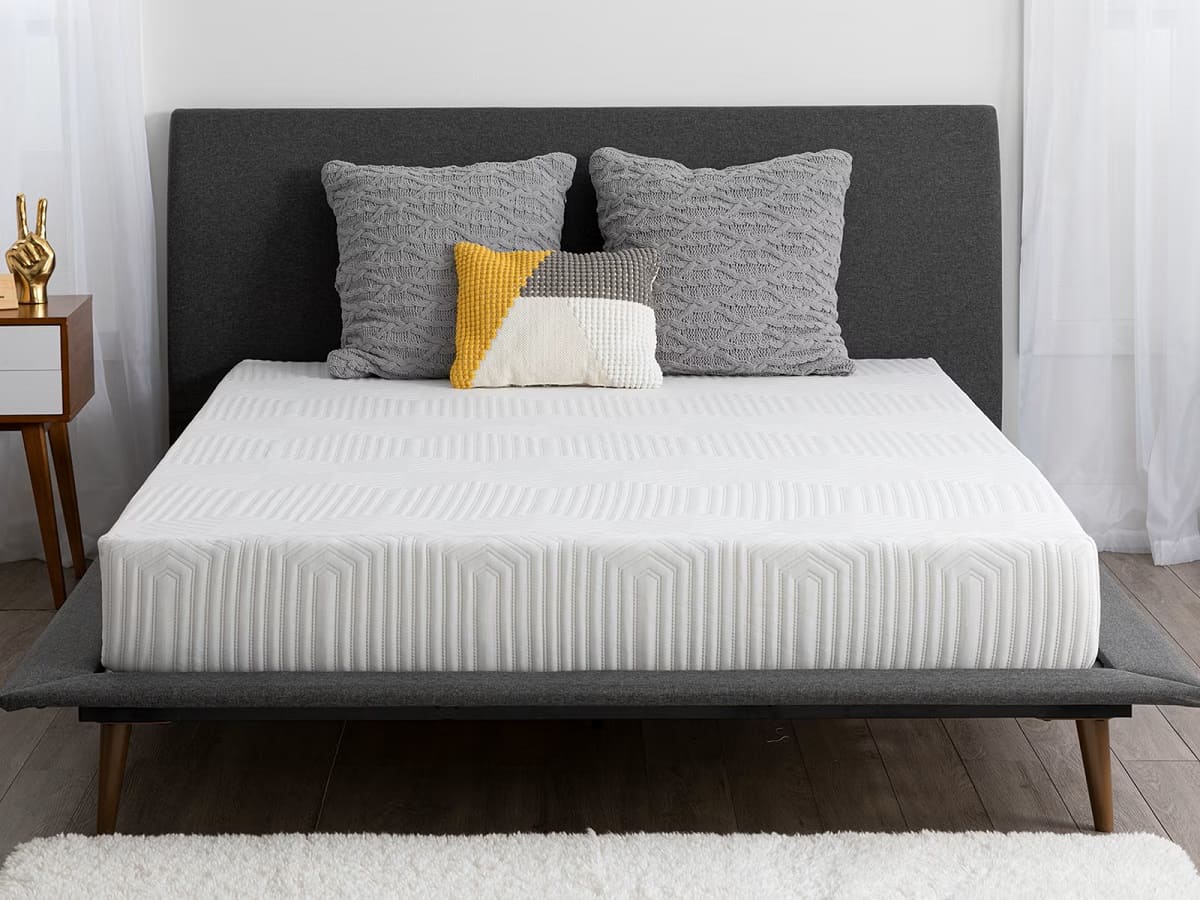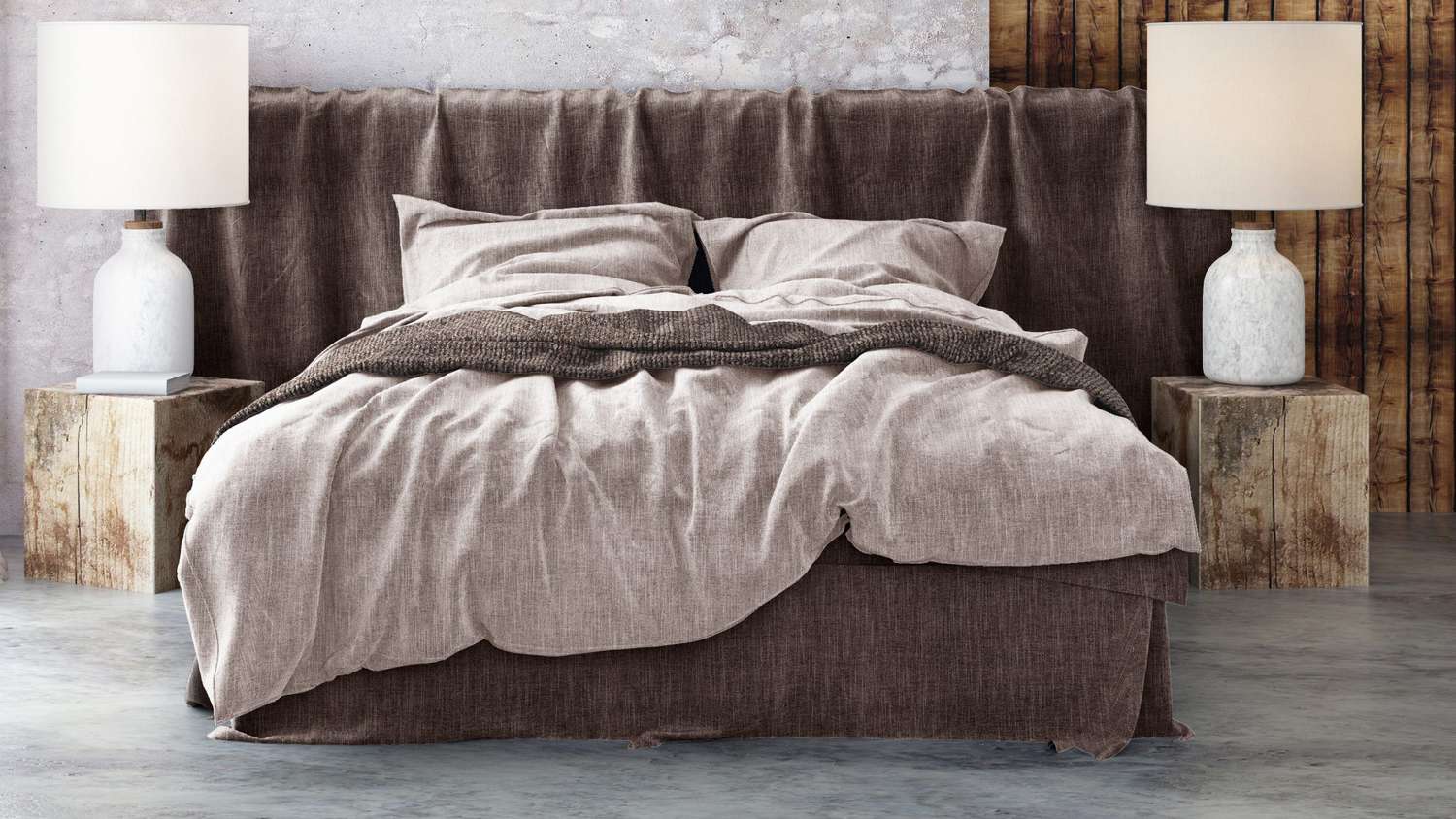Home>Furniture>Bedroom Furniture>How To Make A Bed Softer
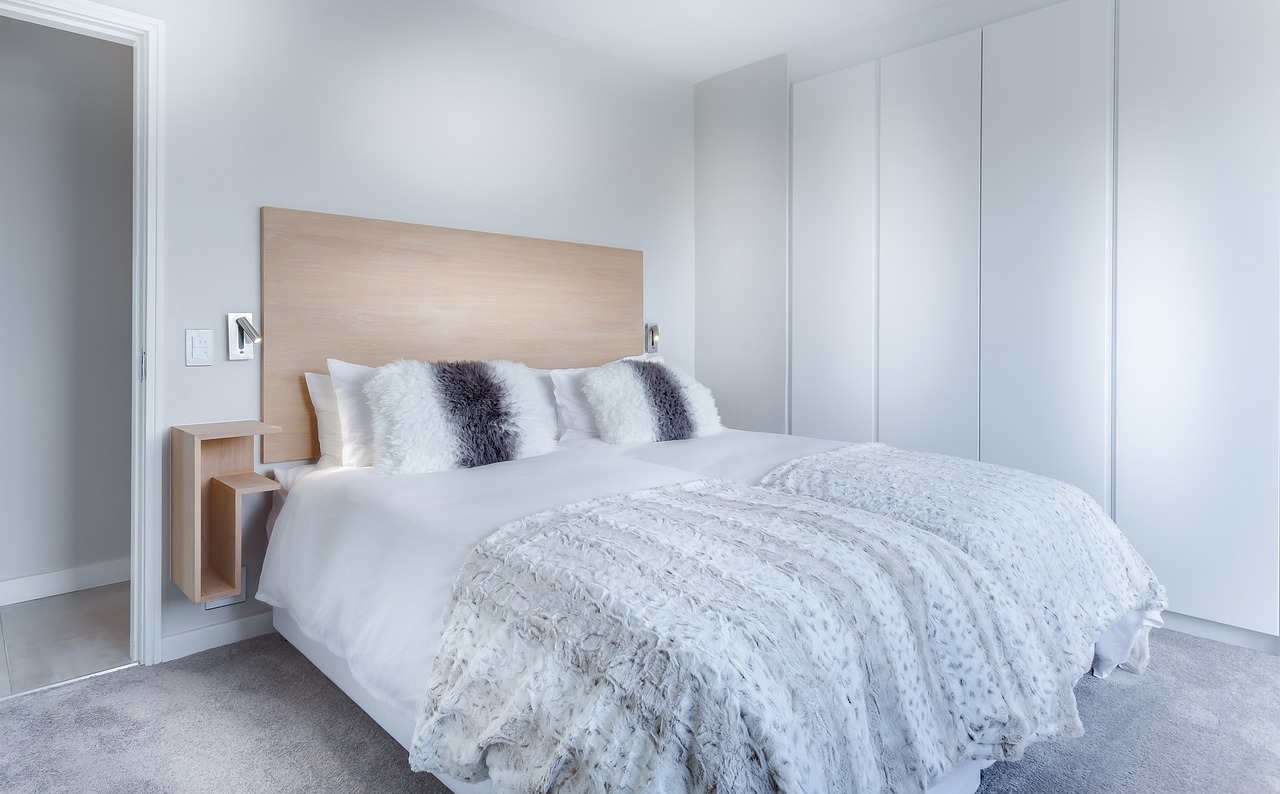

Bedroom Furniture
How To Make A Bed Softer
Modified: March 25, 2024
Learn how to make your bed softer with these simple tips and tricks. Create a cozy and comfortable bedroom with the right bedroom furniture and accessories.
(Many of the links in this article redirect to a specific reviewed product. Your purchase of these products through affiliate links helps to generate commission for Storables.com, at no extra cost. Learn more)
Introduction
Welcome to our guide on how to make a bed softer. Having a comfortable bed is essential for a good night’s sleep. However, sometimes the firmness of your mattress may not meet your preferences. Whether you have a mattress that feels too firm or you simply want to add an extra layer of softness, there are several effective ways to achieve a softer sleeping surface.
Before diving into the methods, it’s important to assess the current firmness of your bed. This will help you determine the most suitable approach to make it softer. Keep in mind that different sleeping positions and personal preferences may require different levels of softness.
Now, let’s explore some practical solutions to transform your bed into a cozy and inviting retreat.
Key Takeaways:
- Transform your bed into a cozy retreat by adding a mattress topper and layering soft bedding materials. Adjust your bed frame or foundation to achieve the perfect level of softness for a comfortable and inviting sleep environment.
- Regularly assess and adjust your mattress to achieve optimal softness. Consider investing in a new mattress that meets your preferences for improved sleep quality and overall well-being.
Read more: How To Make Sofa Cushions Softer
Assessing the Firmness of Your Bed
Before you begin making adjustments to your bed’s firmness, it’s crucial to assess its current state. This will help you understand the level of softness or firmness you are working with and determine the best course of action.
One way to evaluate the firmness of your bed is by lying down on it and paying attention to how your body feels. Take note of any pressure points or discomfort in different areas, such as your shoulders, hips, or lower back. If you find that your bed feels too firm and causes discomfort, it may be a sign that you need to add some softness.
Another method is the “hand test.” Stand next to your bed and press your hand firmly onto the mattress. If your hand sinks in significantly, it indicates that your bed is too soft and lacks proper support. On the other hand, if your hand barely sinks in at all, it suggests that your mattress is too firm.
Additionally, consider your sleeping position. Side sleepers generally benefit from a softer bed that provides better cushioning for the shoulders and hips. Back and stomach sleepers, on the other hand, tend to prefer a firmer mattress to maintain proper spinal alignment.
By assessing the firmness of your bed, you can determine the appropriate approach to make it softer while keeping your sleep preferences in mind.
Adding a Mattress Topper
If you want to make your bed softer without investing in a new mattress, adding a mattress topper is an excellent option. A mattress topper is a removable and customizable layer that goes on top of your mattress to enhance its comfort and softness.
When choosing a mattress topper, consider the material that best suits your preferences. Some popular options include memory foam, latex, down alternative, and feather. Memory foam toppers, for example, provide a contouring effect and relieve pressure points, while down alternative toppers offer a softer, plush feel.
To add a mattress topper, start by removing any bedding and sheets from your mattress. Carefully unroll the topper over your mattress, ensuring it is centered and aligned. Smooth out any wrinkles or creases to ensure a seamless fit.
One of the primary benefits of using a mattress topper is its ability to customize the softness of your bed. If you find that the topper alone doesn’t provide enough softness, you can experiment by layering multiple toppers or combining them with other bedding materials, such as foam pads or quilted mattress covers.
Remember to regularly fluff and rotate your mattress topper to maintain its shape and prevent uneven wear. Depending on the type and material of the topper, some may require occasional airing out or spot cleaning to keep them fresh and clean.
By adding a mattress topper, you can easily adjust the softness of your bed to create a more comfortable and inviting sleep environment.
Layering Soft Bedding
Another effective way to make your bed softer is by layering soft bedding materials. This involves adding extra cushioning and comfort through various bedding components, such as mattress pads, plush blankets, and cozy pillows.
Start by investing in a high-quality mattress pad or protector. These not only provide an extra layer of softness but also offer protection for your mattress against spills, stains, and allergens. Look for mattress pads made of soft materials like cotton or down alternative, which can provide a plush feel.
Next, consider using a fluffy down comforter or a soft, quilted blanket. These bedding items can add an extra layer of warmth and coziness to your bed while simultaneously adding softness. Opt for comforters or blankets with a higher fill power for a more luxurious and plush experience.
Pillows are also crucial when it comes to creating a soft and comfortable bed. Choose pillows that suit your preferred sleeping position and provide adequate support. If you’re a side sleeper, consider using soft and supportive pillows that can alleviate pressure on your shoulders and neck. Back and stomach sleepers may benefit from medium to firm pillows that maintain proper spinal alignment.
To maximize the softness, you can experiment with different pillow arrangements. Layering multiple pillows with varying levels of softness can help achieve the desired comfort level. For example, placing a soft down pillow on top of a firmer pillow can create a plush and supportive sleep surface.
Lastly, don’t forget to invest in soft and breathable sheets and pillowcases made from materials like cotton or bamboo. These materials offer a smooth and cozy feel against your skin and can significantly enhance the overall comfort of your bed.
By layering soft bedding materials, you can create a luxurious and inviting sleep haven that offers a softer and more comfortable sleeping surface.
Adjusting Your Bed Frame or Foundation
If you find that your bed is too firm, it may be worth examining your bed frame or foundation as a potential contributing factor. Making adjustments to your bed frame or foundation can help improve the overall softness and comfort of your sleeping surface.
One simple adjustment you can make is to add a mattress pad or a layer of foam padding between your mattress and the bed frame or foundation. This additional padding can provide extra cushioning and absorption of pressure, resulting in a softer feel.
Another option is to check the slats or supports of your bed frame. If they are spaced too far apart or are overly rigid, they may contribute to a firmer sleeping surface. In this case, you can try adding additional slats or using a bunkie board to provide more support and reduce the firmness.
If you have a box spring foundation, consider its condition and quality. Over time, box springs may lose their cushioning ability, leading to increased firmness. In such cases, replacing the box spring with a new one or opting for an alternative foundation like a platform bed or an adjustable base can provide a softer and more comfortable sleeping experience.
Lastly, experiment with the height of your bed frame. Raising or lowering the bed frame can change the feel of the mattress and alter its firmness. Adding risers or using a lower bed frame can create a softer sleeping surface, while a higher bed frame can give a firmer feel.
By adjusting your bed frame or foundation, you can fine-tune the firmness of your bed and achieve a softer and more comfortable sleeping surface.
To make a bed softer, consider adding a mattress topper or a thicker comforter. These can provide extra cushioning and make your bed more comfortable.
Read more: How To Make A Toothbrush Softer
Flipping or Rotating the Mattress
If your mattress has a two-sided design, flipping or rotating it regularly can help maintain its shape and prolong its lifespan. In some cases, flipping or rotating the mattress can also alter its firmness and make it feel softer.
Start by checking the manufacturer’s instructions for your specific mattress model. Some mattresses are designed to be flipped, while others need to be rotated. Follow the recommended flipping or rotating schedule to ensure optimal performance and longevity.
Flipping the mattress involves turning it over entirely so that the side that was previously at the bottom is now at the top. This can help distribute the weight and pressure more evenly, preventing sagging and compression in specific areas. Flipping the mattress can make it feel softer, especially if you’ve been sleeping on the same side for an extended period.
Rotating the mattress involves turning it around so that the head becomes the foot and vice versa. This can help even out the wear and tear and prevent indentations from forming in certain areas. By rotating the mattress, you can achieve a more balanced feel and potentially decrease the firmness.
It’s important to note that not all mattresses can be flipped or rotated, especially those with a one-sided design or built-in pillow tops. Be sure to check the manufacturer’s guidelines to avoid damaging the mattress.
By regularly flipping or rotating your mattress, you can maintain its performance and potentially make it feel softer, providing you with a more comfortable sleeping surface.
Breaking In and Fluffing Up the Mattress
When you first purchase a new mattress, it may take some time for it to fully break in and reach its optimal level of comfort. Breaking in the mattress involves allowing the materials to settle and adjust to your body over time. This process can help soften the mattress and improve its overall feel.
To break in your mattress, start by being patient and giving it some time. The exact duration will vary depending on the type of mattress and individual preferences, but on average, it can take anywhere from a few weeks to a couple of months. During this time, sleep on the mattress regularly and rotate it occasionally to ensure even wear.
Additionally, regularly fluffing up your mattress can help restore its loft and increase its softness. This is especially important for mattresses that contain materials like down, feathers, or fiberfill. Fluffing can be done by gently shaking and patting the mattress surface to redistribute the fill and restore its plumpness.
To fluff up specific areas of the mattress, you can also use your hands to massage and knead the material, particularly in areas prone to compression. This action helps stimulate the fibers and restore their resilience.
It’s worth noting that not all mattresses require breaking in or fluffing. Memory foam mattresses, for example, may not need as much time to adjust to your body. However, fluffing can still be beneficial for maintaining the loft of any mattress.
By allowing your mattress to break in and regularly fluffing it up, you can soften its feel, improve its comfort, and prolong its longevity.
Considering a New Mattress
If your current mattress is old, uncomfortable, or no longer meets your needs, it may be time to consider investing in a new one. A new mattress can provide you with the perfect level of softness and support for a restful night’s sleep.
When shopping for a new mattress, it’s important to consider various factors to ensure you choose the right one for your needs. Here are a few key points to keep in mind:
1. Firmness Levels: Determine your preferred level of firmness, whether it’s soft, medium, or firm. This will depend on your sleeping position, body type, and personal preferences.
2. Materials: Consider different mattress materials, such as memory foam, latex, innerspring, or hybrid options. Each material provides a unique feel and level of softness.
3. Support and Pressure Relief: Look for a mattress that offers adequate support and pressure relief for your body. This can help alleviate any discomfort or pain and provide a more comfortable sleeping surface.
4. Motion Isolation: If you share your bed with a partner, consider a mattress with good motion isolation. This feature can minimize disturbances from movements, allowing both you and your partner to sleep undisturbed.
5. Cooling Features: If you tend to sleep hot, consider mattresses with cooling features such as gel-infused foam or breathable materials that help regulate body temperature.
6. Warranty and Trial Period: Check the warranty and trial period offered by the mattress manufacturer. This ensures that you have enough time to test the mattress and return or exchange it if it doesn’t meet your expectations.
Remember to try out different mattresses by visiting mattress stores or utilizing online mattress companies that offer sleep trials. Lie down on each mattress for a few minutes and assess its comfort and support level to make an informed decision.
Investing in a new mattress that meets your softness preferences can significantly improve the quality of your sleep and overall well-being. Take the time to research and choose wisely to ensure a comfortable and restorative night’s rest.
Conclusion
Creating a softer and more comfortable bed is within your reach with the right techniques and considerations. Whether you’re looking to enhance the softness of your current mattress or considering investing in a new one, there are a variety of effective methods to achieve the level of comfort you desire.
The first step is to assess the firmness of your bed by considering your sleeping position, performing the hand test, and listening to your body’s needs. From there, you can explore options like adding a mattress topper to customize the softness, layering soft bedding materials for extra cushioning, and adjusting your bed frame or foundation to find the perfect balance.
Don’t forget about the importance of flipping or rotating your mattress to even out wear and tear and break it in for optimal comfort. Regularly fluffing up your mattress and considering a new mattress when needed are also essential elements in creating a soft and cozy sleeping surface.
In the end, investing in your bed’s softness and comfort is an investment in your own well-being. A comfortable bed can improve the quality of your sleep, promote proper spinal alignment, and help alleviate pressure points, leading to a refreshed and rejuvenated body and mind.
Remember to consider your personal preferences, body type, and budget when making adjustments or selecting a new mattress. With a little research and experimentation, you can create a sleep environment that is uniquely tailored to your comfort needs.
So go ahead, incorporate these tips and techniques into your bedroom and experience the joy of sinking into a softer and more inviting bed. Sweet dreams!
Frequently Asked Questions about How To Make A Bed Softer
Was this page helpful?
At Storables.com, we guarantee accurate and reliable information. Our content, validated by Expert Board Contributors, is crafted following stringent Editorial Policies. We're committed to providing you with well-researched, expert-backed insights for all your informational needs.
